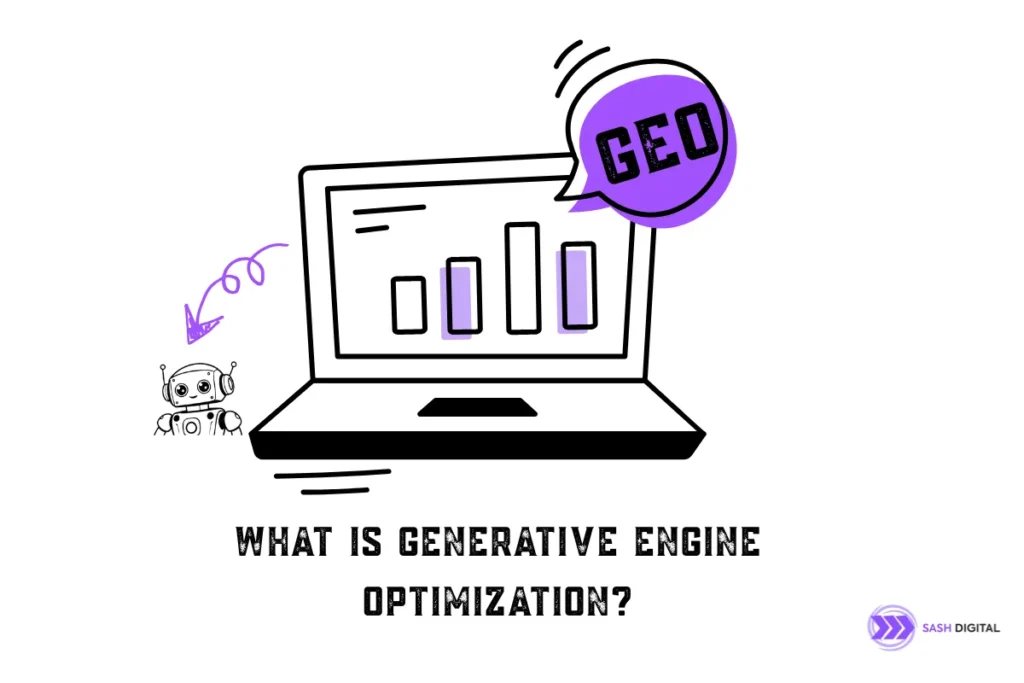Generative Engine Optimization (GEO) isn’t just another trend, it’s the next step for ecommerce businesses looking to stay visible as traditional search evolves.
As platforms like ChatGPT, Google’s SGE, and AI-powered assistants shape how people discover products, ecommerce brands need to adapt. GEO focuses on getting your content seen and selected by AI-driven engines that generate answers instead of listing links.
This guide breaks down how ecommerce brands can start implementing GEO to keep their content relevant, ranked, and ready for the shift.
Why Ecommerce Stores Need GEO
People aren’t just typing product names into Google anymore. They’re asking detailed questions like:
- “What’s a good wedding outfit under PKR 10,000?”
- “Best everyday abayas for summer in Karachi?”
- “Where to find lightweight formal wear with fast delivery?”
These queries are being answered directly by generative models pulling from multiple sources—not just one product page. If your content isn’t optimized to be referenced by these engines, you’re invisible.
GEO helps your brand appear in:
- AI-generated shopping guides
- Comparison responses
- Summarized lists
- Contextual recommendations
Step-by-Step GEO Strategy for Ecommerce
1. Understand Generative Engines
Before optimizing, know how these engines work:
- They don’t display 10 blue links.
- They pull answers from credible, content-rich, and structured data.
- They favor brands with consistent relevance, clear context, and authority.
Learn more about the fundamentals of Generative Engine Optimization.
2. Structure Content Around Queries
Instead of product-first content, write query-first content.
Example: Rather than “Buy Lawn Suit – New Arrival,” create:
- “Which lawn suits are best for humid weather?”
- “Affordable stitched lawn suits for daily wear under PKR 4,000”
This means blog content, FAQs, and product copy all need to be restructured with intent-based queries in mind.
3. Create Content for Language Models, Not Just Humans
Generative engines prefer content that’s:
- Clear and structured
- Factual and objective
- Written in natural, neutral tone
Use headings, bullet points, comparison tables, and clear context.
Example Format That Works:
Title: Best Ready-to-Wear Outfits for Office Wear in Lahore Intro: What people typically look for Subsections:
- Breathable fabrics
- Local brands delivering in 2 days
- Price points under PKR 5,000
That’s the kind of format generative engines can parse and cite.
4. Re-Optimise Product Pages
Every product should:
- Answer a common question
- Include features that solve a use case (e.g., crease-free, summer-friendly)
- Mention location relevance when possible (e.g., ideal for Karachi weather)
GEO favors products embedded in context-rich environments.
5. Include Authoritative Signals
Generative engines reference trusted sources. Here’s how to build that trust:
- Get mentioned by credible blogs or influencers
- Add testimonials and reviews that sound natural
- Keep schema markup clean and updated
If your product pages or blogs cite data or mention industry trends, it boosts their relevance.
6. Balance Product and Informational Content
Split your site’s content mix:
- 50% Informational: Style guides, comparison posts, FAQ content
- 50% Product-focused: But with helpful angles like “Top abayas for working women”
Consistency in this balance improves your chance of being cited in generative outputs.
7. Track Mentions Beyond Google
GEO success isn’t measured by traditional SERP rankings alone. Track:
- How often your brand or product shows up in AI tools
- Whether your content is being summarized in answers
- Backlinks or traffic from assistant-like tools
GEO is Not SEO—But They Should Work Together
While traditional SEO focuses on ranking for exact keywords, GEO is about showing up in conversations and AI responses.
That’s why brands working on both simultaneously are ahead. Sash Digital’s GEO services help ecommerce brands align their SEO foundation with the future of AI-driven search.
GEO Content Ideas for Ecommerce Brands
Here are some content types that perform well with generative models:
- “Best [product] under PKR [X]”
- “What to wear for [event/season/region]?”
- “How to choose [product] for [occasion/use]”
- Comparison blogs (Brand A vs. Brand B)
- Buying guides
Use these content types across your blog, collection descriptions, even social media.
Ready to Take the Next Step?
If your ecommerce business wants to stay ahead of AI-driven shopping behaviors, it’s time to rethink your content and SEO strategy. GEO is already reshaping how products are found—and bought.
Want to discuss how GEO can work for your store? Contact the team at Sash for a consultation.



